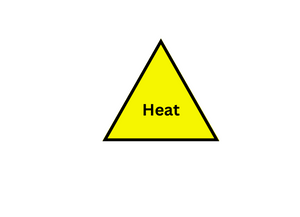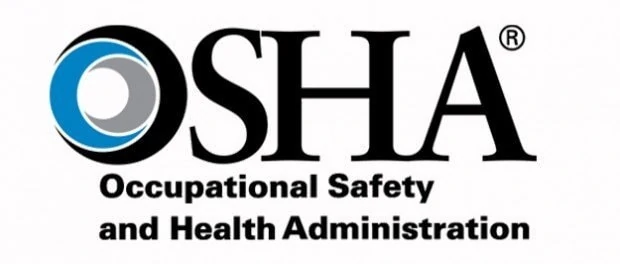The fire triangle is a simple model used to describe the three essential elements required for a fire to occur and sustain itself. The three elements are heat, fuel, and oxygen. The fire tetrahedron is an expanded model of the fire triangle, which includes a fourth element, the chemical reaction.
Table of content:
1. Fire Tetrahedron
2. Heat
3. Fuel
4. Oxygen
5. Chemical Reaction
6. Related Standards and Codes
Fire Tetrahedron
Further research over the years revealed a fourth necessary component of fire, the chemical chain reaction. The Fire Triangle was consequently transformed to the Fire Tetrahedron. Put it simply, a Tetrahedron is a solid pyramid with four plane faces (from the Greek words ''tesseris edres''), each one representative of the four necessary elements.
In short, a fire begins by an external ignition source which is usually in the form of a flame or spark. With its turn, the external ignition source heats the fuel under the presence of oxygen. As both fuel and oxygen are heated, molecular activity increases. If properly heated, a self-sustaining chemical reaction is developed. The consequent chemical reaction will then escalate at a point where the external ignition source is no longer necessary for the propagation of the fire.
Once ignition has occurred, it will continue until:
- all the available fuel has been consumed or
- the fuel and/or oxygen is removed or
- the temperature is reduced by cooling or
- the number of excited molecules is reduced and the chain reaction is broken
Although simplistic in nature, presented diagrams are in fact a good example of how to actually extinguish a fire in the real world. For example, we can create a barrier using foam in order to reduce/eliminate the ''fueling'' of fire and therefore deprive the fire from one of its necessary elements (oxygen). By applying water, we can also reduce the temperature below the ignition temperature. Finally, by using a Halon extinguisher, we can create an inert gas barrier which will interfere with the chemical chain reaction.

Heat
Heat is the initial spark or energy source that raises the temperature of the fuel to its ignition point. This ignition temperature is the minimum temperature required for the fuel to start burning. Once the fuel reaches its ignition point, it begins to release energy in the form of heat and light, which further raises the temperature of the fuel.
Fuel
Fuel refers to the material that is being burned to sustain the fire. Fuels can be solids, liquids, or gases, and they can come in a variety of forms. Different fuels have different properties, such as their flammability, burning rate, and ignition temperature.


Oxygen
Oxygen is required for combustion to occur. When fuel is exposed to oxygen, it reacts and releases energy in the form of heat and light. Oxygen is present in the air we breathe, and its concentration in the air can affect the intensity and spread of a fire.
Chemical Reaction
The chemical reaction is the process by which the fuel and oxygen combine to produce heat, light, and other byproducts, such as carbon dioxide and water vapor. The chemical reaction that occurs during combustion is an exothermic reaction, meaning it releases heat and energy as a result of the chemical bonds between the fuel and oxygen being broken. This heat energy is then used to maintain the reaction and to continue producing more heat and energy, leading to a self-sustaining fire.


Fire Tetrahedron vs Fire Triangle
To study difference between Fire Tetrahedron and Fire Triangle check this detailed post on fire triangle.
Related Standards and Codes
There are various international standards referring to fire protection. Most widely used standards and codes fire nowadays are National Fire Protection Association (NFPA) standards. However, reference can also be made to other US standards (like ANSI standards or Code of Federal Regulation (CFR) standards) or European standards (ISO and DIN standards). Leading commercial insurance companies have also developed standards of their own codes for fire (for example Factory Mutual) and their requirements may sometimes be stricter than those of international standards of fire.
Here are some of the important standards and codes of fire related to fire safety:
National Fire Protection Association (NFPA) Codes:
The NFPA develops and maintains various codes and standards for fire related to fire safety. The NFPA's standards are widely used in the United States and around the world. The following NFPA codes are particularly relevant to the fire tetrahedron:
- NFPA 1: Fire Code
- NFPA 10: Standard for Portable Fire Extinguishers
- NFPA 13: Standard for the Installation of Sprinkler Systems
- NFPA 25: Standard for Water-Based Fire Protection Systems
- NFPA 70: National Electrical Code
- NFPA 72: National Fire Alarm and Signaling Code
- NFPA 101: Life Safety Code
- NFPA 120: Standard for Fire Hydrants

The American National Standards Institute (ANSI):
ANSI is a non-profit organization that sets voluntary consensus standards for a wide range of products and services. ANSI standards are developed through a process that involves input from a variety of stakeholders, including manufacturers, users, and government agencies. Some of the most common ANSI standards and codes for fire protection include:
- ANSI Z10: Occupational Safety and Health Management Systems
- ANSI Z76.1: Fire Alarm Systems
- ANSI Z87.1: Eye and Face Protection
- ANSI Z400: Fire Protection in Buildings

The Code of Federal Regulation (CFR):
CFR is a set of regulations issued by the U.S. government that govern a variety of activities, including fire protection. The CFR is divided into 50 titles, each of which covers a different subject area. The title that covers fire protection is Title 29, Labor. Some of the most common CFR standards and codes for fire protection include:
- 29 CFR 1910.146: Fire Protection
- 29 CFR 1910.30: Flammable and Combustible Liquids
- 29 CFR 1910.39: Electrical Safety-Related Work Practices
- 29 CFR 1910.102: Ventilation

The International Organization for Standardization (ISO)
ISO is an international organization that develops and publishes standards for a wide range of products and services. ISO standards are developed through a process that involves input from a variety of stakeholders, including manufacturers, users, and government agencies. Some of the most common ISO standards and codes for fire protection include:
- ISO 7240: Fire Protection Equipment
- ISO 3864: Fire Safety Signs and Symbols
- ISO 13565: Fire Detection and Alarm Systems
- ISO 14520: Fire Extinguishers

Occupational Safety and Health Administration (OSHA) Standards:
OSHA sets regulations for workplace safety in the United States. While not specifically focused on the fire tetrahedron, OSHA standards address various fire safety aspects, such as fire prevention plans, fire protection systems, and hazard communication.

It's important to note that fire safety standards and codes can vary by region and country. The ones mentioned above are widely recognized and used, but local regulations and standards should always be consulted to ensure compliance with specific requirements in a particular jurisdiction.




